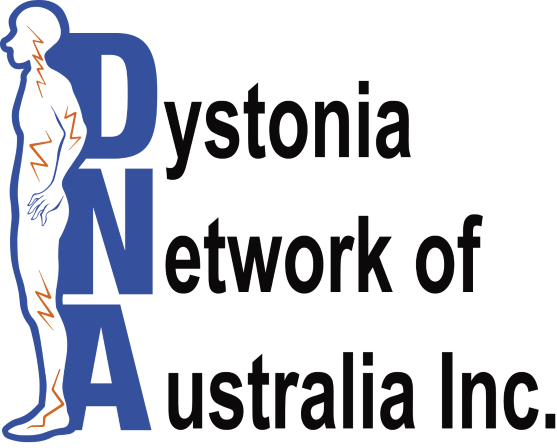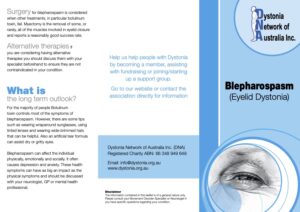What is Blepharospasm?
Blepharospasm, or eyelid dystonia, is a focal dystonia, which means it affects one area of the body, in this case the eyelid muscles, causing them to close the eyes without warning. The person with blepharospasm has difficulty opening the eyes again, and for this period of time is unable to see despite vision being unaffected. In many cases it begins gradually with eye-watering, problems in bright sunlight or a dry or gritty feeling in the eyes, causing the person to squint or blink frequently. Both eyes are usually affected but there are rare cases where only one eye is affected. Although blepharospasm generally occurs between the ages of 50 and 70 years, it does sometimes affect younger people.
Blepharospasm can be seen alone or in combination with other dystonias, for instance orofacial dystonia, which causes twisting movements of the face and mouth. The symptoms can vary and may become worse when the person is under stress or in a social setting.
What causes Blepharospasm?
For most people with blepharospasm no cause is found. However, it is generally accepted that blepharospasm is related to a problem with the functioning and connections of various areas of the brain including the basal ganglia and the cerebellum.
Research continues into a genetic cause but until now no gene for blepharospasm has been found.
There is no known cure but there are treatments that help with the symptoms and research into all forms of dystonia continues world-wide.
How is blepharospasm diagnosed?
Diagnosis is mostly based on the clinical judgement of the specialist after consideration and evaluation of the clinical symptoms, examination and detailed history. There are no special scans, X-rays or blood tests at present to diagnose blepharospasm.
It may take some time to be given a diagnosis, as early in the condition symptoms may only occur from time to time. A delay in diagnosis means a delay in treatment which can add to the person’s frustrations.
Some people with blepharospasm can help their blepharospasm by a so-called “sensory trick”. This may vary from person to person. For example, they may notice that touching the eyes, nose or forehead at a certain point, yawning or pulling the eyebrows up temporarily allows them to reopen their eyes.
Secondary blepharospasm can occur in conditions such as Parkinson’s disease, sometimes as a side effect of treatment.
What treatments are available?
For specific information on any of the following treatments please see treatment options.
Oral medications include benzodiazepines, antispasmodics and anticholinergics only help in controlling symptoms in a minority of sufferers if used as the only treatment.
Botulinum toxin remains the treatment of choice for blepharospasm. Small amounts are injected into the muscles around the eye responsible for eye closure. This reduces the overactivity in these muscles allowing the eyelids to open more easily. This treatment has been used successfully and safely worldwide for many years and has the most success in reducing symptoms. There can be temporary side effects including drooping of the eyelid, blurring of vision, and bruising at the injection sites. However, for most people it is well tolerated.
Surgery for blepharospasm is considered when other treatments, in particular botulinum toxin, fail. Myectomy is the removal of some, or rarely, all of the muscles involved in eyelid closure and reports a reasonably good success rate.
Alternative therapies: if you are considering having alternative therapies you should discuss them with your specialist beforehand to ensure they are not contraindicated in your condition.
What is the long term outlook?
For the majority of people Botulinum toxin controls most of the symptoms of blepharospasm. However, there are some tips such as wearing wraparound sunglasses, using tinted lenses and wearing wide-brimmed hats that can be helpful. Also an artificial tear formula can assist dry or gritty eyes.
Blepharospasm can affect the individual physically, emotionally and socially. It often causes depression and anxiety. These health symptoms can have as big an impact as the physical symptoms and should be discussed with your neurologist, GP or mental health professional.
Download Brochure
Brochure – Blepharospasm
Download PDF
Not a member? Join today to assist us to continue to provide resources.
Disclaimer: The information contained on this page is of a general nature only. Please consult a Movement Disorders specialist or neurologist if you have specific questions regarding your condition.
Page reviewed 31 January 2024





